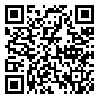Volume 17, Issue 2 (Summer 2025)
3 2025, 17(2): 64-75 |
Back to browse issues page
Download citation:
BibTeX | RIS | EndNote | Medlars | ProCite | Reference Manager | RefWorks
Send citation to:



BibTeX | RIS | EndNote | Medlars | ProCite | Reference Manager | RefWorks
Send citation to:
Mobarhan fard A. Modeling Health Risk Assessment in the Aquaculture Production Chain in Kurdistan Province: From Pond to Market. 3 2025; 17 (2) :64-75
URL: http://jmb.ahvaz.iau.ir/article-1-1025-en.html
URL: http://jmb.ahvaz.iau.ir/article-1-1025-en.html
Department of Fisheries, Sanandaj Branch, Islamic Azad University, Sanandaj, Iran
Abstract: (52 Views)
In recent years, the increasing demand for seafood in Iran, especially in Kurdistan Province, has raised concerns about the safety and health of these products. Aquaculture in this region is mainly conducted in earthen and concrete ponds, and the products undergo several stages before reaching the consumer market, each of which can be a potential source of microbial and chemical contamination. The aim of this paper is to model the health risk assessment across the entire aquaculture production chain, from cultivation to final market delivery, with a focus on Kurdistan Province. For this purpose, a quantitative risk assessment (QRA) approach was used across four main stages of the production chain: farming, harvesting, transportation, and marketing. Field data were collected through microbiological sampling, direct observations, and structured questionnaires. Additionally, statistical models and specialized software such as @RISK and Crystal Ball were used to simulate various risk scenarios. The results showed that the highest likelihood of microbial contamination occurred during the harvesting stage, while the lowest was observed at the final market stage. Moreover, managerial factors such as workers' personal hygiene, water quality, and transportation methods had a direct impact on either reducing or increasing the risk. Finally, using the final model, critical points in the chain were identified, and recommendations for risk reduction at each stage were proposed. This study can serve as a model for improving seafood safety in other regions of the country.
Keywords: Risk modeling, seafood safety, production chain, microbial contamination, Kurdistan Province
Type of Study: Research |
Subject:
Special
Received: 2025/05/20 | Accepted: 2025/06/28 | Published: 2025/06/28
Received: 2025/05/20 | Accepted: 2025/06/28 | Published: 2025/06/28
Send email to the article author
| Rights and permissions | |
 |
This work is licensed under a Creative Commons Attribution-NonCommercial 4.0 International License. |





